In Bali, the kitchen is more than just a place to cook. It is an integral component of the Balinese compound, imbued with philosophy and age-old traditions.
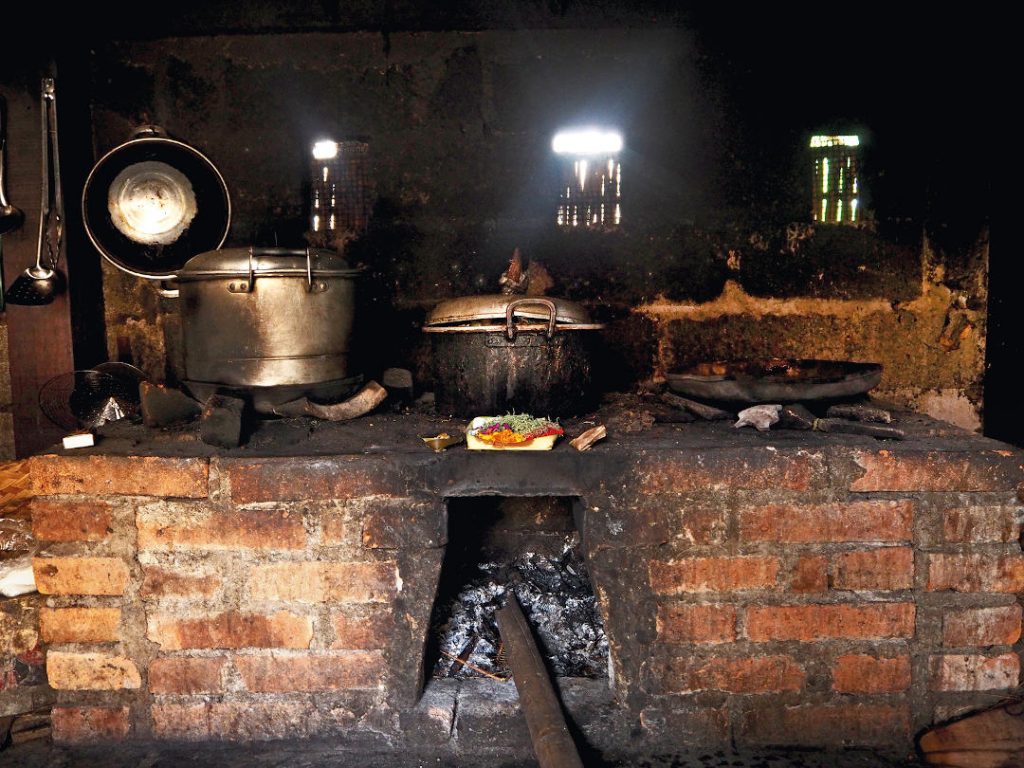
You would expect a cultural heritage as dynamic as Balinese cuisine to have its ancient recipes retained on tangible means. However, unlike other traditions and customs in Bali, there is no written history of Balinese food, not one palm-leaf manuscript (lontar) can testify. For centuries, cooking techniques and eating habits have instead been verbally passed down by elders to children and grandchildren who help in the kitchen. Yet, the passing of food culture down the generations isn’t the only piece of history you’ll find in the traditional Balinese kitchen. The very structure of the room itself follows age-old Balinese architectural philosophy.
Like houses in ancient Rome, the traditional Balinese home faces inward, guarded by a railing of towering walls. Located within the confines is a set of dainty buildings or bales, each erected for unique purposes, and adorned by a garden and greenery blooming in the vicinity. One building will be designated for cooking, whilst the other for washing, with bedrooms built separately, and the cardinal puzzle piece being the family temple or ancestral shrine. The rules of this spatial organisation is based on the Balinese philosophy, tri mandala; whilst the guidelines of each symbolic architectural design is oriented in line with asta kosala kosali.
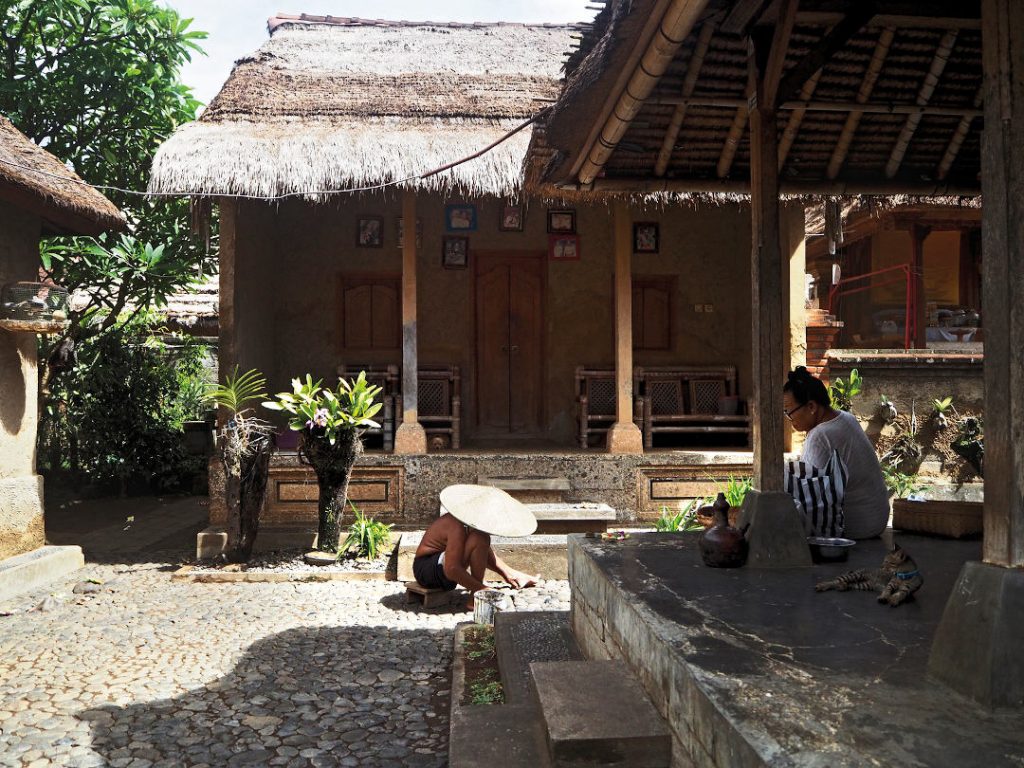
Unlike houses in the west, the staple ‘living room’ is non-existent in old-world Bali. Bali’s tropical climate plays a role in the architectural preferences inherited by their ancestors. This is evident in the al fresco dining room, practically a pavilion looking out into the garden, whilst the entirety of the outdoor compound serves as a playground or what others would normally call a living room. This is also to pay respect to the harmony of God, nature, and human – or tri hita karana.
A Balinese complex symbolically resembles the human body, where the head is represented by the family temple (sanggah), with the kitchen (paon) and ‘rice storage building’ (lumbung) acting as the limbs, even the garbage pit possesses the role of a backside orifice. All in all, each building is aligned based on the kaja and kelod (north and south) axis between the mountains and the sea, also known as the philosophy of sanga mandala (spatial division based on directions) and arga segara (the sacred axis).

The kitchen or paon is situated southerly, associated with Brahma the god of fire whose territory belongs in the south. According to the traditions, a kitchen is understood as the ‘dirtier’ quarter of the compound, housing the woods, oils, smoke, and soot; hence its polar opposite region from the temple in the north, seen as the ‘cleaner’ realm where holy mountains can be found. This hierarchy among different ‘realms’ falls under the tri angga and tri loka philosophies.
Any kitchen, traditional or modern, fundamentally embodies two elements: fire and water. In Bali, where beliefs are strongly rooted in animism, these two principles are venerated as the kitchen deities.
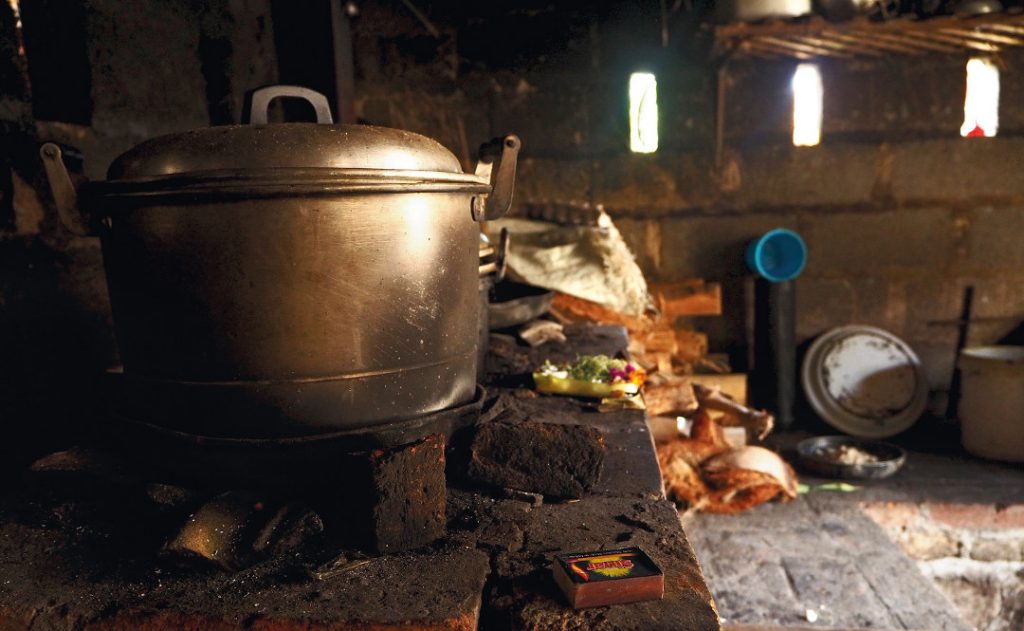
The water god of Wisnu is present in the form of a great terracotta water vessel, often placed in the corner of the room; whilst Brahma’s altar is portrayed by the rack of firewoods adjacent to the open-fire wood-stove. You’ll often find fresh offerings perched atop them. Today, offerings dedicated to the two gods are commonly placed over the sink and two-burner gas stoves.
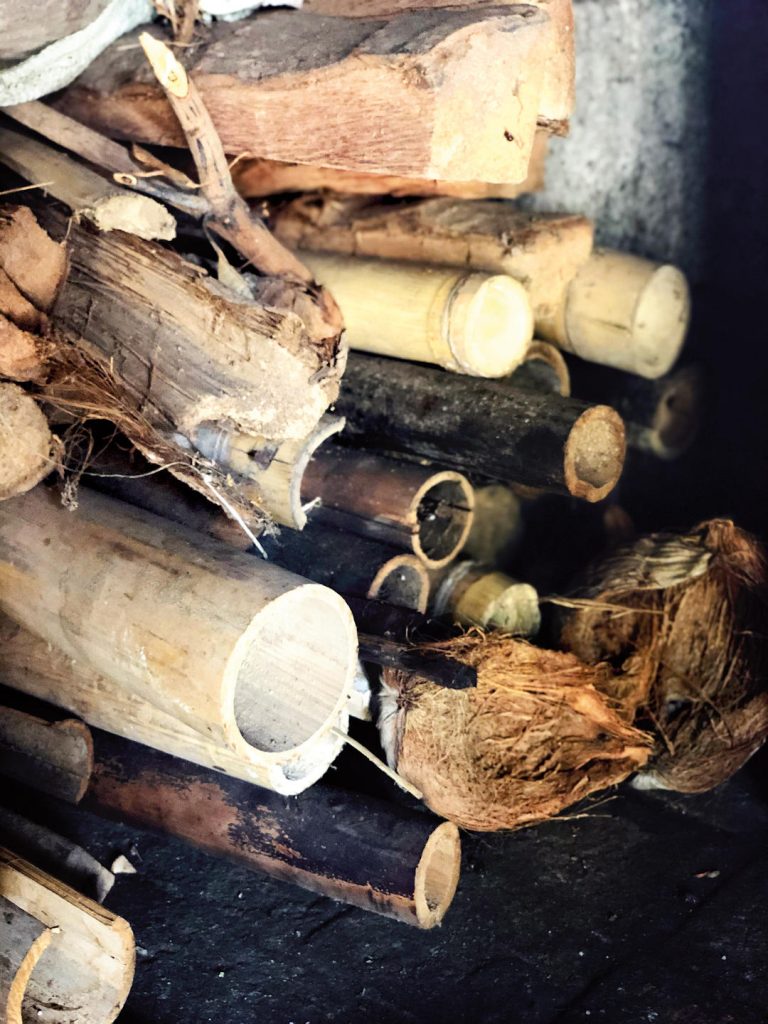
For the most part, cooking is done by women in the very early hours of the day. The preparation can require hours of rinsing, peeling, cutting, grinding, grating, as well as an extent of space, hence the habit of carrying out the activity in the garden where it’s bright and spacious. These women would also walk for miles carrying tubs of water on their heads to refill home supply.
Before any dazzling Chinaware and polished pots and pans in the olden days mankind were resourceful by nature. Kitchen instruments would be homemade, using what was available then and there. You’d find a thick round tree trunk for a cutting board. Lu and lesung, or mortar and pestle, were the traditional stamping utensils made with a long hand-held wooden pole sturdy enough for grinding, and a stone bowl with a round hole in the centre corresponding to the circumference of the pole. Dried coconut shells would carry salt and spices; frying spatulas were made by cutting out a metal biscuit tin attached to a wooden handle; sawn-off bamboo to be served as cups; and disposable banana leaves to hold your food. There was no need for cutlery, as food was best enjoyed when picked with bare hands.
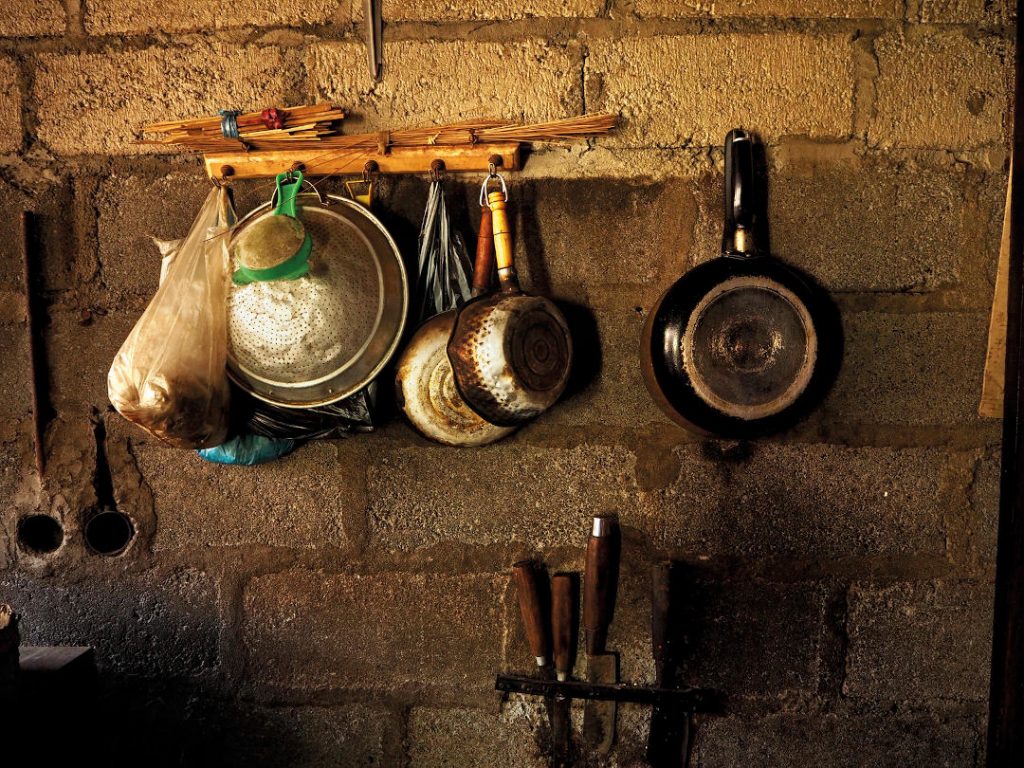
Refrigeration is a recent innovation, but the Balinese take pride in the art of cooking fresh food every day. This still rings true today. There was never a custom of saving feasts for next day consumption – they would leave leftovers for dogs and livestock. The long-time custom in fact, has influenced them to shop every single morning to cook from scratch. No sight of produce stocked up from last week’s groceries is expected in a Balinese kitchen. It would go against the grain of Balinese food philosophy (of cooking simple food to be consumed daily) if one were to cook in large quantities to last overnight. It’s safe to say there’s no room for freezing and reheating in the traditional Balinese paon – and certainly no cold pizza slice for a midnight snack!






